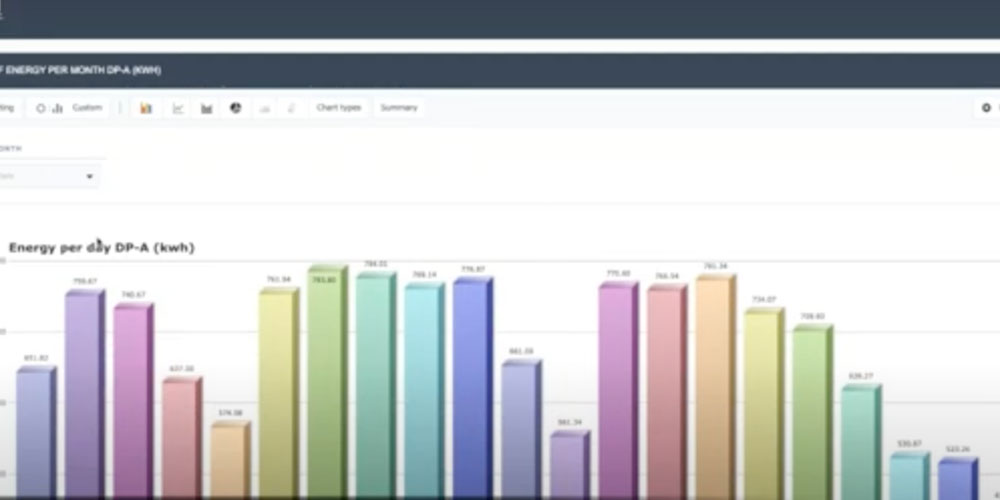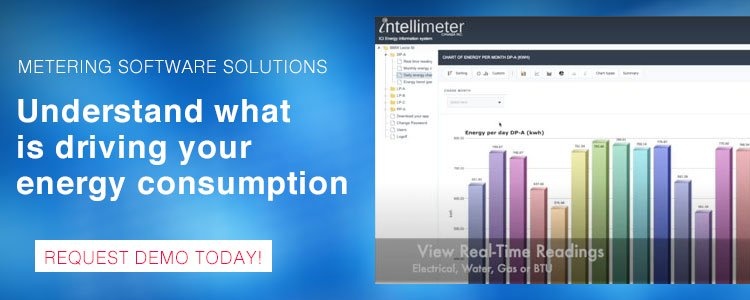Energy Management Information Systems (EMIS) are a tool to facilitate the Energy Manager save on utility expenses and improve productivity. EMIS helps Property Owners and Property Managers attain consistent savings year after year by benchmarking and tracking consumption. Leveraging EMIS is also a way for organizations to be more environmentally friendly.
What is an EMIS?
The Energy Management Information System (EMIS) consists of Hardware (Meters & Data Collection Units) for data capture, Software, and Algorithms for analysis and reporting. EMIS tracks the use of resources such as Thermal Energy, Water, and Electricity in specific areas of consumption like; lighting, heating, ventilation, air conditioning (HVAC), and other mechanical systems in buildings.
While there are a lot of software systems available in the market, It is important to understand that the effectiveness of these software and reporting systems relies on a strong foundation, that is the hardware or the submetering system.
The benefits of Energy Management Information Systems include:
-
Promote operational efficiencies
Many organizations use EMIS to record and analyze energy consumption data with the aim to reduce energy costs. Energy Management Information Systems provide companies the tools to visualize and compare their building performance over time to improve their long-term profits and reduce risks.
EMIS can help organizations determine where energy is being overused or wasted. Energy use is monitored and tracked, allowing for a clear understanding of use patterns and for finding outliers in consumption or abnormal performance in the building.
-
Save energy
The research paper; "Proving the Business Case for Building Analytics" prepared by the Lawrence Berkeley National Laboratory, demonstrated how EMIS allows organizations to stay informed about their utility costs, their equipment performance, and by using this tool to achieve energy savings. An EMIS can provide real-time alerts when there is a spike in energy use, or demand to allow energy curtailing or demand shifting by modifying the scheduling of the HVAC equipment. The system enables organizations to track data over time to assess performance improvements or declines in specific areas of the building whether by occupant or by type of system over time.
-
Monitor performance and track key metrics
EMIS also helps organizations monitor and track energy, and perform Monitoring Based Commissioning of the building to determine if equipment degradation exists, if the equipment is running excessively, or out of schedule, if certain overrides exist and need to be altered, and where they stand concerning industry standards. Energy audits using the data provided by Energy Management Information Systems are simpler and easier to perform because they offer a clear picture of an organization's current standing compared to previous performance levels.
-
Manage services remotely
In addition to being used by managers on-site, Energy Management Information Systems that locate or operate on the cloud, allow specialists to monitor energy usage from an off-site location. Energy managers can monitor data and receive alerts on their mobile phone, tablet, or at home when working remotely, allowing for more efficient management of resources. Making it easier to identify performance outliers to implement changes needed to achieve energy goals.
-
Reduce carbon footprint
Energy Management Information Systems also help companies identify the right targets where they should focus their efforts to maximize the return of their investment in the promotion of energy and resource conservation, a needed strategy today to mitigate climate change.


